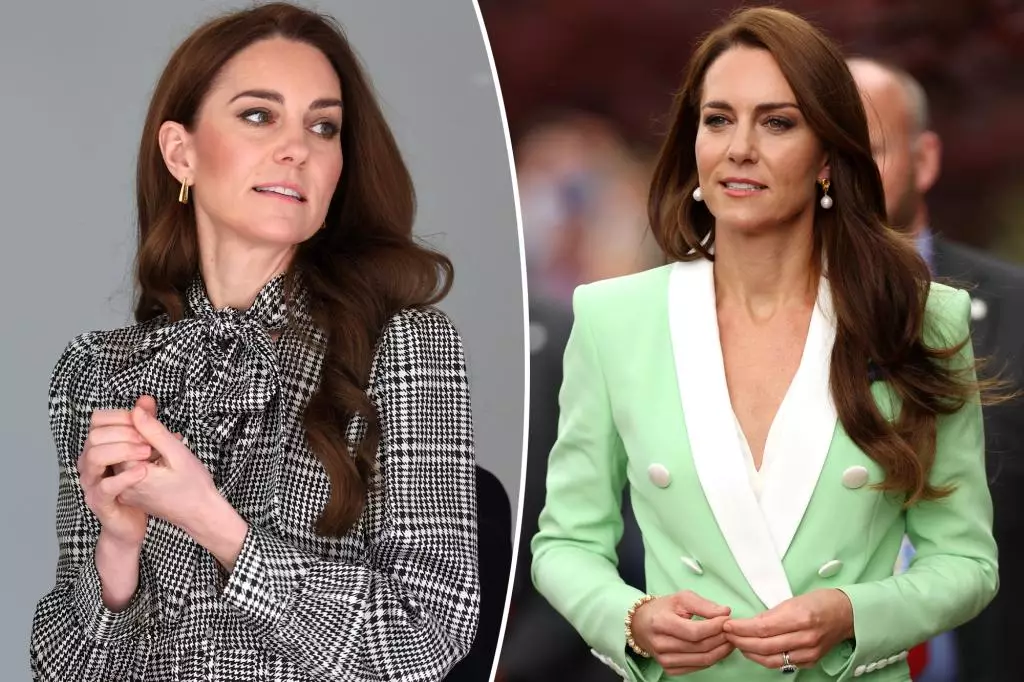Kate Middleton, the Princess of Wales, is undergoing a notable shift in how she engages with the media and the public concerning her image. Recent reports indicate that she intends to prioritize her charitable endeavors over the scrutiny of her wardrobe choices. This decision appears to stem from a desire to redirect the narrative surrounding her public appearances—one that has often centered on fashion rather than her contributions to society. In an age where celebrity culture frequently overshadows substance, it is commendable that Middleton seeks to emphasize the mission behind her public engagements.
A source close to the palace recently articulated Middleton’s intent, stating, “There is an absolute feeling that it [the public work] is not about what the princess is wearing.” This assertion underscores a broader recognition within the royal family that public figures should be defined by their actions rather than by their attire. This paradigm shift is particularly poignant for Middleton, who has seen her style consistently analyzed and critiqued, sometimes eclipsing her roles and responsibilities as a member of the royal family.
Middleton’s new approach also coincides with significant personal changes. Following her cancer diagnosis announced in March 2024 and her subsequent treatment, she has emerged with a renewed perspective on life and her royal duties. Being declared in remission has led her to re-evaluate what truly matters, focusing on “the simple yet important things in life,” as she articulated in a heartfelt statement. This has evidently influenced her public ethos, contributing to a more profound commitment to the charities and causes she supports.
Her reflection on her health challenges provides a context for this rebranding of her public image. By stepping back from the camera’s relentless gaze toward her fashion, Middleton is attempting to create a narrative that resonates more deeply with her audience, emphasizing shared values and collective experiences rather than mere appearances.
Balancing Tradition and Modernity
Historically, royal family members have often utilized attire as a means of communication, employing fashion to convey messages. From honoring national colors during state visits to donning pieces that symbolize particular causes, clothing has played a significant role in the royal narrative. However, Middleton seems ready to redefine this tradition. While it’s expected that the palace will still issue details about her outfits for significant state events, the less formal engagements will no longer be subjected to the same level of scrutiny.
This change signifies more than just a personal preference; it represents an evolution in how modern royalty interacts with the public and media. Such a move could influence other public figures facing similar dilemmas regarding their images, reinforcing the idea that depth and substance can triumph over superficiality in the public eye.
The public’s response to Middleton’s decision remains to be seen. Fans of her style might take time to adjust to the new dynamic, as the Princess has long been heralded as a fashion icon. However, there is also a growing segment of the audience that appreciates her focus on philanthropy and societal issues. By shifting attention away from fashion, Middleton is likely to cultivate a deeper connection with those who share her concerns for social issues, youth mental health, and community welfare.
Moreover, this pivot could rejuvenate her public image, aligning it more closely with contemporary values that prioritize authentic engagement over mere aesthetic appeal. The hope is that by spotlighting her work, Middleton can inspire others to become more involved in charitable activities, fostering a societal shift that values action over appearance.
Kate Middleton’s decision to scale back on discussions of her wardrobe in favor of spotlighting her charitable work marks an important moment in the evolution of royal engagement. By redirecting attention toward substantive issues, she is forging a path that not only honors her personal experiences but also resonates with growing public desires for authenticity and impact. This strategic realignment reflects a broader cultural shift, suggesting that the true measure of leadership lies not in flamboyant displays of fashion but in the capacity to inspire and effect meaningful change within society. Whether this approach will create lasting change in the public perception of royalty remains to be seen, but it undoubtedly sets an encouraging precedent for how public figures can navigate their roles and responsibilities in today’s media landscape.

